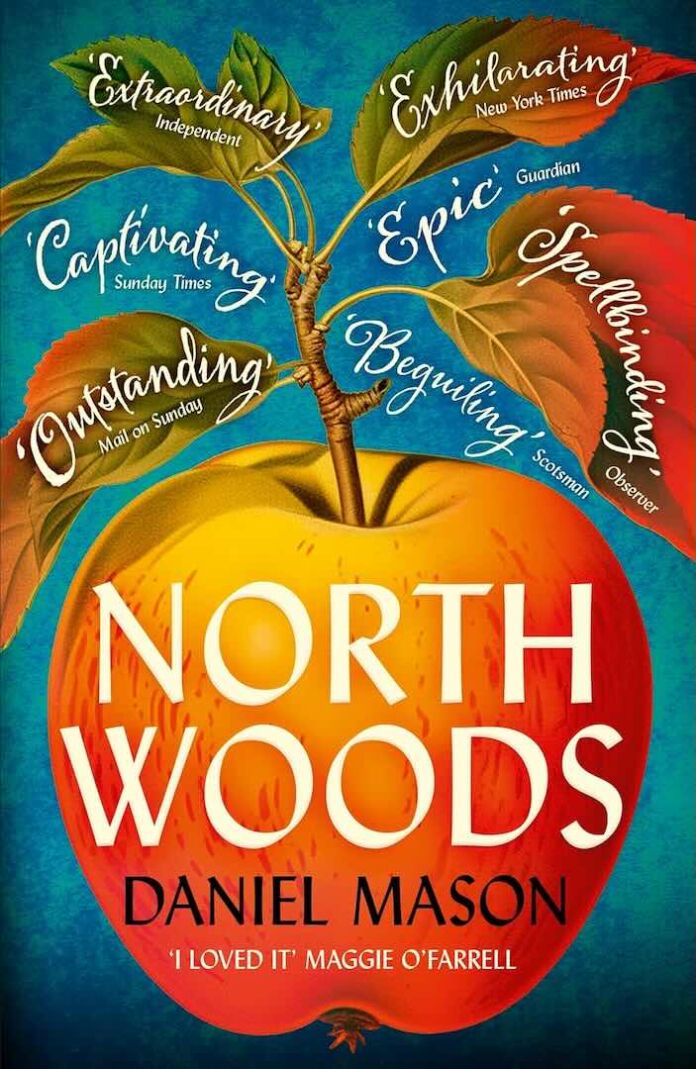In his latest masterwork North Woods, Daniel Mason weaves an intricate narrative that spans centuries within a single patch of New England forest. The novel, structured around the twelve months of the year, presents a mesmerizing exploration of how lives intersect across time, bound together by a shared space that bears witness to their stories. Following his earlier works like The Piano Tuner and the Pulitzer Prize finalist A Registry of My Passage upon the Earth, Mason demonstrates his evolving mastery of historical fiction while venturing boldly into magical realism.
The House as History’s Vessel
The story begins in June with two young lovers fleeing a Puritan colony, establishing a modest cabin that becomes the anchor for the entire narrative. What follows is an extraordinary succession of inhabitants whose lives unfold within and around this dwelling. Mason’s genius lies in how he transforms the house from mere setting into a living entity that absorbs and reflects the histories it contains.
Characters That Haunt the Memory
The cast of characters is remarkably diverse and compelling:
- A British Major who abandons warfare for the cultivation of apples
- Twin sisters whose complex relationship ends in tragedy
- A grieving widower turned metal detectorist
- A modern-day scientist studying forest succession
- And perhaps most unusually, a lusty beetle whose perspective offers an unexpected view of human affairs
Mastery of Multiple Forms
One of the novel’s most striking features is Mason’s virtuosic handling of different literary forms. The narrative shifts seamlessly between:
- Traditional prose
- Letters and diary entries
- Scientific observations
- Folk ballads
- True crime magazine articles
- Real estate listings
This variety could feel gimmicky in less skilled hands, but Mason makes each form feel essential to the story’s tapestry.
The Natural World as Character
Mason’s portrayal of nature deserves special mention. The forest isn’t merely backdrop but an active participant in the narrative. His description of seasonal changes, plant succession, and ecological relationships reveals deep research while maintaining poetic beauty. The way he tracks the changing forest through centuries – from virgin woodland to farmland to second-growth forest – provides a powerful commentary on environmental change and human impact.
Critical Assessment
While North Woods is undeniably ambitious and largely successful, it does have moments where its complexity threatens to overwhelm. Some readers might find the multiple timelines and perspectives challenging to follow, particularly in the middle sections where several narrative threads compete for attention.
The novel’s experimental structure, while innovative, occasionally creates emotional distance from individual characters just as we’re becoming invested in their stories. However, this could be seen as intentional, reflecting the temporary nature of human presence against the permanence of place.
Themes and Symbolism
The novel explores several interconnected themes:
- The persistence of memory in physical spaces
- Human relationship with nature
- The cyclical nature of time
- Love and loss across centuries
- The way stories echo through generations
Mason’s use of recurring motifs—particularly apples, ghosts, and forest succession—creates a rich symbolic landscape that rewards careful reading.
Literary Context and Comparison
North Woods sits comfortably alongside other works that explore place through time, such as Richard Powers’ The Overstory and Annie Proulx’s Barkskins. However, Mason’s approach feels fresh, particularly in his integration of natural history with human drama.
Style and Prose
Mason’s prose is a testament to his growth as a writer. He moves effortlessly between different registers—from the formal language of historical documents to the immediacy of contemporary dialogue. His descriptions of nature are particularly striking:
“In the forest, the canopy grows thicker. Shield and ostrich ferns overgrow the spring ephemerals. Ruby-throated hummingbirds fly in from the south, swallowtails and wood satyrs flit between the dogwoods, and the songbirds find their mates and settle down to nest.”
Areas for Improvement
While the novel’s ambition is admirable, there are moments where:
- The multiple narrative threads could be more tightly woven
- Some character transitions feel abrupt
- The experimental structure occasionally overshadows emotional engagement
- Certain historical periods receive more attention than others, creating slight imbalance
Final Verdict
North Woods is a remarkable achievement that pushes the boundaries of historical fiction while remaining deeply readable and engaging. Mason has created something rare: a novel that is both experimental and accessible, intellectual and emotional, historic and immediate.
Who Should Read This Book
This novel will particularly appeal to readers who enjoy:
- Historical fiction with experimental elements
- Nature writing and environmental themes
- Multiple interconnected narratives
- Literary fiction that challenges conventional forms
- Stories about place and memory
Impact and Significance
In an era of climate crisis and environmental concern, North Woods offers a unique perspective on humanity’s relationship with nature. It reminds us that we are all temporary custodians of the places we inhabit, while suggesting that our stories somehow persist in the landscape long after we’re gone.
Mason has created not just a novel but a meditation on time, nature, and human connection. While not perfect, it’s an ambitious and largely successful work that confirms his place as one of our most thoughtful contemporary writers.





